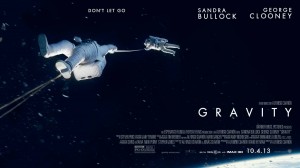What is the Science Behind “Gravity?”
Posted on October 9, 2013 at 8:00 am
Alfonso Cuarón told Wired Magazine about the 4 1/2 years he spent making “Gravity.” 
We had to do the whole film as an animation first. We edited that animation, even with sound, just to make sure the timing worked with the sound effects and music. And once we were happy with it, we had to do the lighting in the animation as well. Then all that animation translated to actual camera moves and positions for the lighting and actors. We did a whole exploration of the screenplay, every single moment; we made judgments about everything. Once we began shooting, we were constrained by the limitations of that programming….We shot space scenes in a sort of virtual-reality box that had the characters’ environments projected on the walls. The actors had very little room to change their timing or their positions. But we adapted. Sandra Bullock trained like crazy to be able to be a part of all these technological challenges. It was choreography for her. I think her background as a dancer helped a lot. It was so much by numbers. After all the training and all the rehearsals, she was able to just focus on the emotional aspect of her performance…..
The animators had a significant challenge. “After all, you learn how to draw based on two main elements: horizons and weight…Exactly. They had neither of those things, poor guys. It was a nightmare for them. They would make stuff and I’d say, “Yeah, but that looks like they’re standing at a bar, not floating in space.” We had a physicist explain the laws of zero gravity and zero resistance.” But he admits that “Apollo 13” may be more accurate than “Gravity.”
So, what does a physicist have to say? Neil deGrasse Tyson tweeted about some of what the movie got wrong, even if it did not relate to physics. (He also said he liked it.) George Clooney should not have to explain to a doctor the medical impact of oxygen deprivation, but that could be justified as a way of calming her down. On the other hand, some of the science is wrong. Why doesn’t Sandra Bullock’s hair float in zero gravity? “Nearly all satellites orbit Earth west to east yet all satellite debris portrayed orbited east to west.” “When Clooney releases Bullock’s tether, he drifts away. In zero-G a single tug brings them together.” “How Hubble (350mi up) ISS (230mi up) & a Chinese Space Station are all in sight lines of one another.” One thing they got right: “The film #Gravity depicts a scenario of catastrophic satellite destruction that can actually happen.”
One of the science advisors appeared on CBS to talk about the movie.
And Cuarón says he does not know what his next movie will be, but he is certain that the characters will all walk with their feet on the floor.
